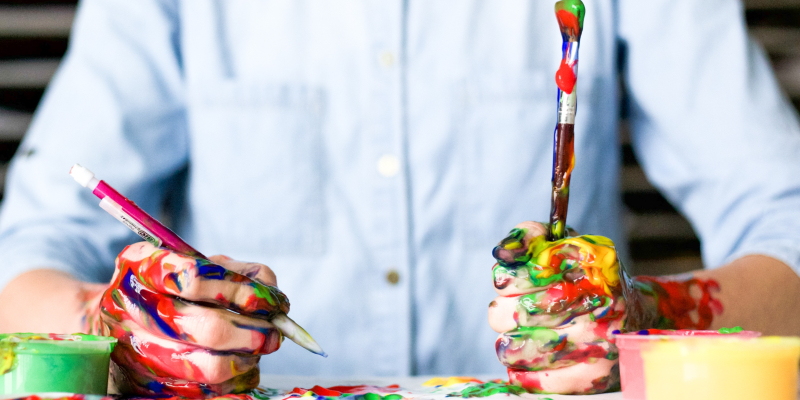Ways To Make Users Feel More Valued With Good Design Psychology
When people talk about design, they don’t usually couple it with psychology.
A design used to be thought of as a purely artistic job, but times are changing. In order to create a successful design, you will need a lot more than beauty and inspiration. Various fields of knowledge can help artistic design get to new heights. Psychology is probably the most important one of all. It plays a humongous part in how we perceive art and design. Here are some of the ways you can incorporate psychology into your designs.
You have to understand people
Psychology is all about understanding behavior and emotions. Good designers should strive to use some psychological principles when making their apps and websites. In order to understand why the users of an application did something, you need to figure out the way they think. Their problems and pain points when using new designs have to be analyzed. If a user can't navigate an application that is made to solve a specific problem, you need to ask yourself why that is.
You could always directly ask users what they think of the application. It’s a lot more intuitive than coming up with ideas on your own. Ask what part of the application doesn’t sit well with them. Perhaps a certain feature should be designed in a different way. User experience is the most important aspect of a successful application so you need to exhaust every avenue in order to improve it.
Improve communication
Communication is one of the most important aspects of any business. It can take many different forms, depending on what your job is. In design, you're not necessarily directly communicating with the user in question. Communication doesn't necessitate talking or writing. It's just a way to convey information from one person to another. Your application or website design is, in a way, a form of communication that the user experiences.
To improve the user experience, you need to up the ante when it comes to communication. Think back to the psychological principles you've already covered. How will you be able to communicate what you want to the user in a way that they are guaranteed to understand?
The science of reading
Language is something that can make or break your design. Content strategists everywhere say that you should put emphasis on the way you write things on your website or app. The kind of language you use is a guaranteed way to attract more users. For this to work, you need to look at your target demographics.
In an ideal situation, you would use the exact kind of language they use. Their vocabulary should become your vocabulary. It's not your goal to teach users new words, because you might bore or even lose them. Reflect the priorities of your users. There are always patterns of human behavior that you can track.
Put emphasis on emotional design
As a designer, you want your design to elicit a specific emotion from your user. Achieving this is no easy task. It requires a deep understanding of how emotions work. Consider the connection between the user and the application. If it’s able to elicit the right kind of emotion, the user will form a much stronger bond with the application or website.
Emotions play a key part in our ability to understand things in our environment. In fact, you could say that they can even change our perception of reality. This is exactly why someone influenced by emotions isn’t an impartial witness, for example. Because of this, eliciting the right emotion can completely change the user experience. It can swing both ways and lead to a negative experience as well. This is why it’s crucial that you get it right.
Aesthetics play a key part
Making your website nice to look at is always going to be important. What you might not know is that the right kind of aesthetic influences a lot more than just how pretty the website is. There’s a whole branch of philosophy that is dedicated to aesthetics alone. Once you scratch the surface of this phenomenon, you’ll come to the realization that the stakes are pretty high. Psychologists have a term for how aesthetics influence our opinions- it's called the “halo effect”. It comes from how attractive people seem to have a figurative halo around them. Due to their aesthetic, you assume that they have other positive qualities.
The same exact phenomenon is seen in product design aesthetics. If your product looks nice, it’s perceived as being more useful and much more valuable. It might seem silly to judge a book by its cover, especially when the book has a very specific practical usage, but there’s a lot more to it. When you think about it, the right kind of design should influence what you think of a product. The amount of effort put into a proper design probably means that the product has a lot of effort put into it as well. It’s a justified bias that will swing your way if you ace the aesthetics of your product.

Restrict choices
There's nothing quite as confusing as the agony of choice. You never want your users to feel overloaded with information. Strangely, this also includes being overloaded with a high number of choices. The human mind doesn’t always see having a lot of options as a good thing. An overwhelming number of choices will distract the user and it might make them leave your website.
You have to categorize items as much as you possibly can. Be as specific as the product allows you to be. If a user is searching for a specific product, make sure that they have to go through at least three sub-categories before they get to the page with the right results. If they just end up on one large page with every option available, they won’t even bother searching for what they want.
Avoid cognitive overload
Satisfying the human mind seems like an impossible mission. When creating the perfect product, you have to focus on a bunch of things. It has to be attractive enough to reel in every type of user. It has to be interesting enough to keep them coming back, but not too complicated so that they get confused. Balancing these aspects of your product is pretty difficult.
When you’re designing your website, you need to make its navigation intuitive. Every average Joe has to be able to use it with ease, no matter how much internet prowess they have. On the other hand, making the website bland and featureless will not bring in new potential users. Finding the right balance of practicality and attractiveness is essential for search engines to rank your website high on their lists.
Because of this, many designers look for help from a trusted SEO company in order to better achieve this. Overdoing it in any direction will lead to a loss of users, which is why you have to get it just right.
Don’t mess with expectations
Tricks and misdirection are good things if you’re a magician or comedian, but they won’t do you any good if you’re a designer. One of the most important psychological principles you have to follow is Jakob’s law. Jacob’s law states that users spend most of their time on other websites, which is why your website should work the same way other websites work. This can be a bit confusing if other websites start changing things, but the principle is the same. Don’t make your user experience more confusing than other websites.
When you talk about Jacob’s law in e-commerce, it means sticking to some basic facets of website design. Searching through products shouldn’t be a chore and finding what you want to find should be relatively simple. Checkout flow and payment methods should stick to what works. If you design around expectations, you can make interesting breakthroughs while not stepping away from the intuitive design.
Conclusion
Applying psychology to designs is a powerful tool that will propel your products to new heights. Companies are constantly studying how different things affect their users and applying them wherever they can. It’s a huge subject that has had its fair share of research done. Ultimately, in order to be relevant in the current market, you need to be able to properly apply psychology to your products. Follow some of these examples and you’ll be on your way to having the most influential product out there.
Related Posts
As the world of eCommerce continues to evolve, businesses are constantly seeking ways to stand out in the digital landscape. According to a report by Statista, it is predicted that global online sales will reach an impressive mark of $6.5 billion by 2023.
The rapidly changing landscape of e-commerce demands businesses to create a compelling online presence. However, establishing a formidable online store demands much more than a mere digital replica of a physical storefront. It requires a deep understanding of human psychology and a strategic...
For startups in 2024, there are few aspects as important as web development.
Recently, stock photos have become a popular choice in design.
With the digital world picking pace and setting high benchmarks for the upcoming ideas in the industry, the upcoming digital decade is likely to experience much improved and robust digital ideas.

















Comments
comments powered by Disqus